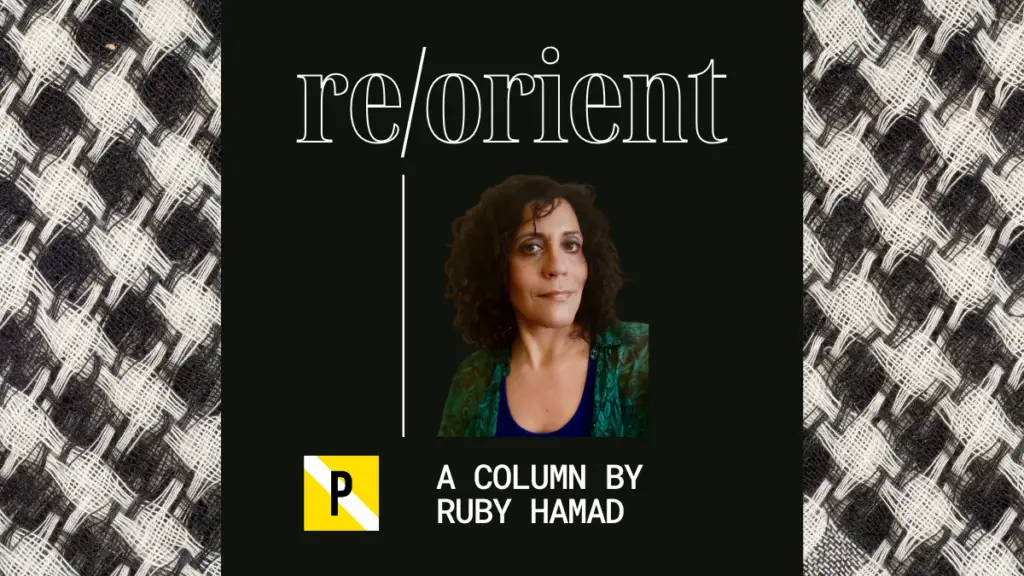

In 1993, following the collapse of the Soviet Union, the American political scientist Samuel Huntington predicted that the next great global conflict would be waged not on economic and ideological lines as in the Cold War, but on cultural ones. “The fault lines between civilizations will be the battle lines of the future,” he wrote in his essay “The Clash of Civilizations?” published in Foreign Affairs.
Huntington‘s thesis, which argued that the main “clash” would be between the West and Islam, borrowed heavily from the work of Orientalist Bernard Lewis, specifically his 1990 essay “The Roots of Muslim Rage.” “We are facing a mood and a movement far transcending the level of issues and policies,” he stated in The Atlantic. “This is no less than a clash of civilizations—the perhaps irrational but surely historic reaction of an ancient rival against our Judeo-Christian heritage, our secular present, and the worldwide expansion of both.”
Huntington acknowledged that conflict between the West and “other civilizations” was also driven by power imbalances and military and economic struggles. He even admitted “a significant element of truth” to arguments that the West uses “international institutions, military power and economic resources to run the world in ways that will maintain Western predominance, protect Western interests, and promote Western political and economic values.”
Nonetheless, he concluded that “civilizational identity”—defined as “basic values and beliefs”—will characterize the future of international relations.
A superficial look at Western Asia, particularly the Levant, may well seem to prove Huntington right. The region is, after all, a frequent site of American military intervention and a locus of the “war on terror.”
But closer inspection shows that Huntington’s thesis operates less as an astute prediction and more as a self-fulfilling prophecy; a foreign policy directive in (thin) disguise.
The Empire’s Playbook: Creating Conflict to Maintain Control
Huntington lamented the refusal of non-Western cultures to embrace “Western” ideals of democracy, liberalism, free markets, equality, human rights, and the separation of church and state. “Modern democratic government originated in the West,” he claimed. “When it has developed in non-Western societies it has usually been the product of Western colonialism or imposition.”
This view—that interventions into non-Western nations are conducted with the noble intent of introducing democracy and elevating human rights—remains widely accepted. But it is ahistorical. The US, for instance, has supported and/or instigated dozens of coups around the world, including against popularly elected leaders, even installing dictators in their place.
In 2000, The New York Times partially published leaked CIA documents [pdf] that admitted to overthrowing Iranian President Mohammed Mossadegh in 1953, after he nationalized the Iranian oil industry to counter British Petroleum’s (then known as the Anglo-Persian Oil Company) insistence on keeping 100 percent of the profits. The CIA would not admit to its role until 2017. Two decades later, Chilean President Salvador Allende was overthrown in a military coup aided by the CIA for putting Chile on a path to democratic socialism.
It has long been in the nature of empires to exaggerate the threat and brutality of their enemies. Ancient Greek historians, for example, attributed excruciating torture methods to their Persian adversaries that they described in vivid detail—but that historians now say likely didn’t exist. Ditto with the supposed Viking execution method the Blood Eagle, popularized by Victorian-era scholars to showcase the barbarity of the Vikings and the moral superiority of the English.
Nothing makes an empire look quite as good as having a bad guy to point the finger at. For decades, that bad guy was the Soviet Union, whose threat was greatly exaggerated to muster the support of a fearful American public for US military expansion and global foreign interventions.
Today, many people in the West are convinced they are at war with Islam and that the future of civilization hangs in the balance. This fear has been deliberately stoked through the rhetoric of the “war on terror,” most recently through Israel’s assault on Gaza and war with Hamas, during which Israel has repeatedly positioned itself as the frontline of Western values. Everyone from Israeli Minister Benjamin Netanyahu to pop singer Regina Spektor reiterated that Israel is all that stands between barbarism and civilization.
But this belies even recent history. Netanyahu is on record stating that the existence of Hamas was key to preventing a Palestinian state. In 2006, reporter Richard Sale revealed that Israel directly and indirectly funded Hamas for years beginning in the late 1970s, quoting a CIA official who described it as “a direct attempt to divide and dilute support for a strong, secular PLO [Palestine Liberation Organisation] by using a competing religious alternative.”
This “divide and rule” strategy became a linchpin of Israeli policy. Historian Rashid Khalidi described Hamas as “the proteges of the Israeli occupation,” and Finance Minister Bezalel Smotrich explicitly stated, “[PLO faction]Fatah is a burden. Hamas is an asset.”
In other words, the clash of civilizations is not an explanation but a convenience, a way to package foreign policy to sell it to the public as necessary for their protection. Hamas provided a means of dividing the Palestinian population and fracturing its resistance movements, while simultaneously garnering support for Israel as all that stood between (Islamic) barbarism and (Western) civilization.
In adopting this tactic, Israel follows in the footsteps of its benefactor. The US was a huge financial backer of Afghanistan’s Mujahideen—who toppled the Soviet-aligned government, became the Taliban, and are now viewed as among the most draconian of Islamist rulers.
Yet, even as it has prosecuted its war on terror, including declaring war on the Taliban shortly after 9/11, the US has maintained close ties with some of the most theocratic Muslim states, including the absolute monarchy of Saudi Arabia (itself the beneficiary of the British bid to hasten the collapse of the Ottoman Empire, which aided the fundamentalist Wahhabi Ibn Saud).
Whereas the recently-deposed, secular authoritarian government in Syria headed by Bashar al-Assad was hit with Western sanctions in retaliation for its crackdowns on public protests and alleged war crimes, the US chose to look the other way when Saudi Arabia fired on protestors in its own kingdom and sent some 1,000 troops to neighboring Bahrain to help quash that country’s uprising. Additionally, the US provided weapons and intelligence to the Saudis throughout its war on Yemen, which has created one of the greatest humanitarian crises of this century.
Instability by Design
Huntington’s thesis received renewed attention in the wake of 9/11, greatly displeasing Edward Said, who questioned why parallels between Osama bin Laden and his followers, and cults like the Branch Davidians and the Rev. Jim Jones were overlooked in favor of sweeping generalizations about civilizational differences.
“Instead of seeing it for what it is–the capture of big ideas (I use the word loosely) by a tiny band of crazed fanatics for criminal purposes,” Said wrote in The Nation, “international luminaries from former Pakistani Prime Minister Benazir Bhutto to Italian Prime Minister Silvio Berlusconi have pontificated about Islam’s troubles, and in the latter’s case have used Huntington’s ideas to rant on about the West’s superiority, how “we” have Mozart and Michelangelo and they don’t.”
There are closer ties between apparently warring civilizations, Said argued, than Huntington’s thesis permits. Ever the literary professor, Said draws on Joseph Conrad’s 1899 novella Heart of Darkness to illustrate how quickly London’s civilized veneer can collapse into barbarity “without preparation or transition.”
Said had cause for frustration. Years earlier, in his 1981 book Covering Islam: How the Media and Experts Determine How We See the Rest of the World, Said had warned that the representation of Islam as a dangerous monolith threatened to lead to many conflicts, extreme suffering, and disastrous upheavals in the Middle East, including “the victory of an ‘Islam’ fully ready to play the role prepared for it by reaction, orthodoxy, and desperation.”
In other words, media, political, and “expert” representations help create the problem it ostensibly attempts to solve.
In the early years of the Syrian conflict, a newly formed Salafi-Jihadist group known as the Islamic State of Iraq and Syria (ISIS), and then simply Islamic State (IS), took the Levant by storm. Although the US government and media framed IS as an enemy that was obsessed with targeting the West, it was, as I have spent the past several years researching, Syrian and Middle Eastern non-Muslims—whom it regarded as inferior—as well as Muslims who did not accept its doctrines that were its primary target of both propaganda and violence.
Huntington’s thesis does not pay sufficient attention to similarities across and differences within “civilizations.” Nor does it account for how the US benefits from the existence of Salafi-Jihadism, which, unfortunately, many in the West now associate most with Islam and is exactly what Said was warning us about.
The periodic attacks on Western soil ignite widespread fear and loathing for Islam. This musters support for further intervention in the Middle East which, in addition to benefitting US interests, ignites more conflict and chaos in the region.
The West’s Islamist Paradox
Far from a true clash, the US and Sunni Islamists often have similar goals in the region, at least in the short term, with both sharing a common enemy: Arab secularism. We see this alignment in the Western acceptance of the new rulers of Syria, the rebel group Hayat Tahrir al-Sham (HTS), headed by a former deputy of al-Qaeda, that toppled the government.
Despite its designation as a terrorist organization, HTS’s foreign minister, Asaad Hassan Al-Shaibani, was favorably interviewed by Tony Blair, former UK Prime Minister and a key architect of the Iraq War, at the recent Davos summit. Shaibani promised to open the Syrian economy to foreign investment, and the process of lifting the Assad-era sanctions has tentatively begun.
That this is occurring against the backdrop of reported forced disappearances and extra-judicial killings of Syrian religious minorities by HTS-affiliated militias illustrates that in its fight against secular but authoritarian governments, the US has shown scant interest in ensuring an alternative that would be any less repressive for local populations.
In March 2016, the Los Angeles Times published this truly remarkable headline: “In Syria, militias armed by the Pentagon fight those armed by the CIA.” The article describes “the difficulty facing U.S. efforts to coordinate among dozens of armed groups that are trying to overthrow the government of President Bashar Assad, fight the Islamic State militant group and battle one another all at the same time.”
Chaos and instability, it appears, is precisely the point.
However much the West portrays itself as a victim of Islamist jihadists, it is those who share Islamists’ “civilizational identity”—millions of ordinary Arabs and Muslims—who are most at risk. From the Taliban to ISIS to HTS, all of these groups pose bigger threats to those who come under the banner of “Islam” (both Muslims and non-Muslims) than they do to “Western civilization.”
None of these groups would have flourished without Western intervention. A declassified CIA paper titled “Syria: Scenarios of Dramatic Political Change,” produced in 1986, just four years after the anti-Western Baath government led by Hafez al-Assad crushed a Muslim Brotherhood rebellion, spoke favorably of the possibility of Sunni-led regime change.
“US interests would be best served by a Sunni regime controlled by business-oriented moderates,” the paper stated as if predicting the words of Shaibani to Blair. “Business moderates would see a strong need for Western aid and investment to build Syria’s private economy, thus opening the way for stronger ties to Western governments.”
HTS, a once self-proclaimed Salafi-Jihadist group, may be presenting themselves now as “business-oriented moderates” but that is not how they came to power or how they functioned during the Syrian conflict.
Huntington’s prophecy is self-fulfilling because far from thwarting Salafi-Jihadism, the West has knowingly aided its ascendancy because Salafi-Jihadism provides opportunities to foment intra-Arab conflict, further plunder the resources of the region, and (re)assert Western hegemony.
Contrary to Huntington’s sensational thesis—and as indicated in Palestine as well as the rapidly unfolding situation in Syria, where the new Islamist rulers have exhibited no desire to resist ongoing Israeli expansionism into Syrian territory—it has been Arab secularism, not Islamist fundamentalism, that posed the bigger threat to Western dominance.





